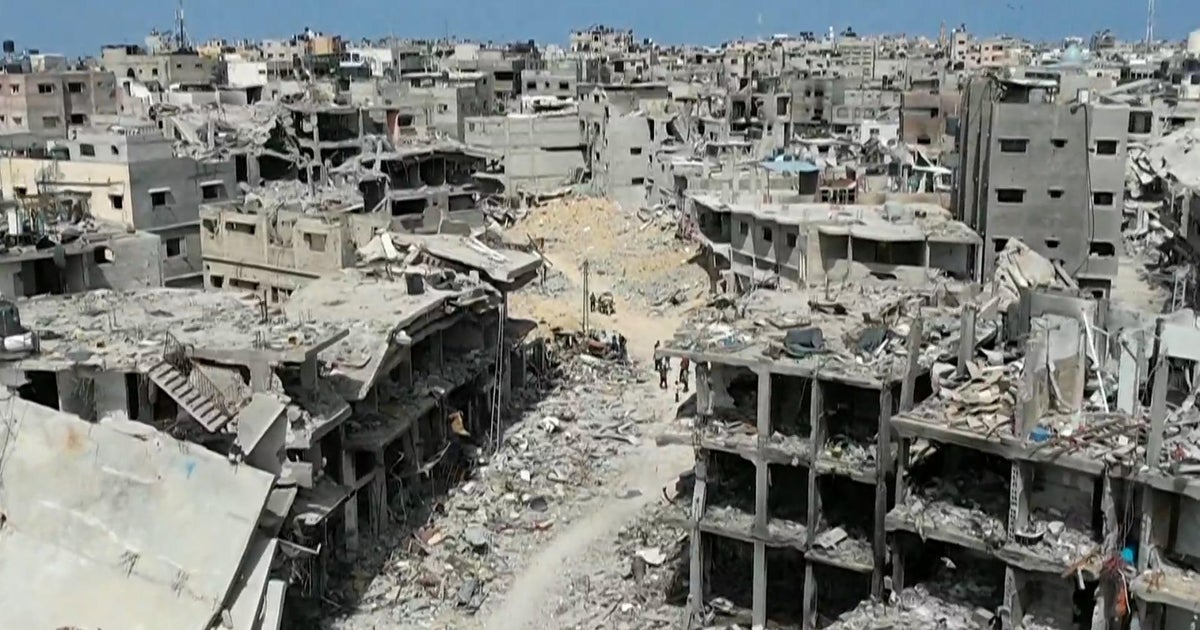An Iranian-American journalist who once worked for a U.S. government-funded broadcaster is believed to have been held by Iran for months, authorities said Sunday. an Israeli attack on the country.
The capture of Reza Valizadeh, which the U.S. State Department acknowledged to CBS News and Associated Press, came as Iran marked the 45th anniversary of the U.S. Embassy takeover and hostage crisis on Sunday. It also followed Iranian Supreme Leader Ayatollah Ali Khamenei who the day before threatened both Israel and the US with “a crushing response” when long-range B-52 bombers reached the Middle East in an attempt to deter Tehran.
Valizadeh had worked for Radio Farda, a Radio Free Europe/Radio Liberty station controlled by the US Agency for Global Media. In February, he wrote on the social platform X that his relatives had been arrested in an attempt to see him return to Iran.
The State Department told CBS News on Sunday that they are “aware of reports that his U.S.-Iranian national has been arrested in Iran,” when asked about Valizadeh.
“We are working with our Swiss partners, who serve as the protecting force for the United States in Iran, to gather more information on this case,” a spokesperson said. “Iran routinely wrongly imprisons American citizens and citizens of other countries for political purposes. This practice is cruel and contrary to international law.”
The spokesperson said the State Department “cannot provide additional comment due to privacy concerns.”
A spokesperson for Radio Free Europe/Radio Liberty told CBS News in a statement on Saturday that it is aware of Valizadeh’s capture in Iran and has no official confirmation of the charges against him. They said Valizadeh stopped working with them in November 2022.
“We are deeply concerned by the Iranian regime’s continued arrests, intimidation and threats against media professionals,” the spokesperson said.
In August, Valizadeh apparently posted two messages suggesting he had returned to Iran, despite Radio Farda being considered a hostile outlet by the Iranian theocracy.
“I arrived in Tehran on March 6, 2024. Before that, I had unfinished negotiations with the Intelligence Department of the Revolutionary Guard,” the message read in part. “I finally came back to my country after 13 years without any security guarantee, not even verbal.”
Vahid Salemi / AP
Valizadeh added the name of a man he said belonged to Iran’s Intelligence Ministry. The AP could not verify whether the person worked for the ministry.
There have been rumors for weeks that Valizadeh has been arrested. The Human Rights Activists News Agency, which tracks cases in Iran, said he was detained upon arrival in the country earlier this year but later released.
He was then arrested again and sent to Evin Prison, where he now faces a case before Iran’s Revolutionary Court, which routinely holds closed-door hearings in which suspects are presented with secret evidence, the agency reported. Valizadeh was also arrested in 2007, the report said.
Iran has not acknowledged holding Valizadeh. Iran’s mission to the United Nations did not immediately respond to a request for comment.
The Voice of America, another U.S. government-funded media outlet overseen by the Agency for Global Media, first reported that the State Department acknowledged Valizadeh’s detention in Iran.
Since the 1979 US embassy crisis, in which dozens of hostages were released after 444 days of captivity, Iran has used prisoners with Western ties as bargaining chips in its negotiations with the world. In September 2023, five Americans held in Iran for years were released in exchange for five Iranians in US custody and $6 billion in frozen Iranian assets to be released by South Korea.
Valizadeh is the first American known to have been detained by Iran since then.
Meanwhile, Iranian state television broadcast images from several cities in the country on Sunday to mark the anniversary of the embassy takeover.
General Hossein Salami, the head of the Guard, also spoke in Tehran, repeating a promise Khamenei made the day before.
“The Resistance Front and Iran will equip themselves with everything necessary to confront and defeat the enemy,” he said, referring to militant groups such as Hamas and Lebanese Hezbollah, backed by Tehran.
In Tehran, thousands chanted “Death to America” and “Death to Israel” at the gate of the former US embassy. Some burned flags of countries and effigies of Israeli Prime Minister Benjamin Netanyahu.
They also carried images of slain top figures from Iranian allied militant groups, including Lebanese Hezbollah leader Hassan Nasrallah and Palestinian Hamas leader Yahya Sinwar. The crowds at the state-organized rallies sang that they were ready to defend the Palestinians.
Tensions have increased in the Middle East after war broke out on October 7, 2023, when Hamas-led militants stormed into southern Israel, killing around 1,200 people, mostly civilians, and kidnapping another 250. The Israeli offensive has killed more than 43,000 Palestinians. according to Gaza health authorities, who did not say how many fighters there were but said more than half were women and children.
Hezbollah, which is also an ally of Iran, immediately began firing rockets, drones and missiles from Lebanon into Israel in solidarity with Hamas. Years of cross-border fighting culminated in full-blown war on October 1, when Israeli forces launched a ground invasion of southern Lebanon for the first time since 2006.
Iran, one of Israel’s bitter enemies, launched its own attack, launching about 180 ballistic missiles at Israel on October 1. Israel retaliated and targeted Iranian military facilities with airstrikes on October 25.
And
contributed to this report.
